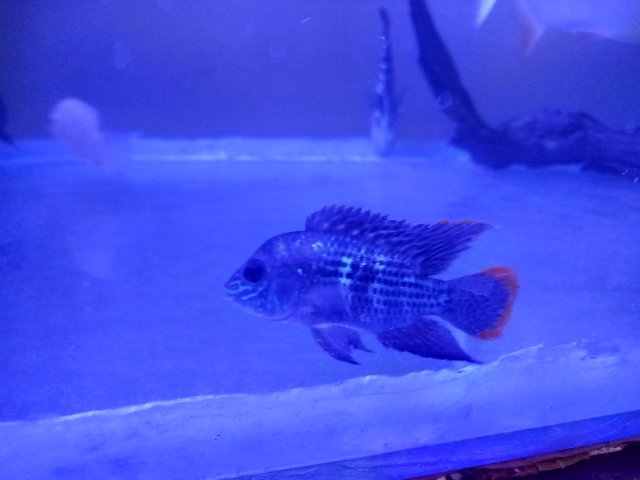The measurements of the male is 14 centimetres and the new “female” is about half his size. So they have a bit grow, if i read a GT male grows up to 20 - 25 centimetres and female 14 - 16 centimetres.
Those sizes are about right, typically. Males can get larger, 28-30 cm, but 30 is exceptional, not what most people will see.
Imo I wouldn't try to hurry them into breeding. The ideal, and it does happen with GTs, is to have a bonded and compatible pair. There's a learning curve for them with breeding (like most SA cichlids), the first spawns may not be successful and it can take a few tries to get it right. Imo not trying to hurry them into breeding, but letting them go at their own pace, gives them a better chance at maturing and working things out, ideally it allows more of a bond to develop before dealing with fry. Nothing's better imo than seeing a cooperative pair, female in a cave tending eggs or newly hatched fry, male outside standing guard, and later the pair both shepherding fry around the tank.
That's the ideal, but it often doesn't work that way. Once they start breeding, a pair is going to do what it's going to do. Imo it means be ready to improvise, perhaps using a divider. What some do is make a hole in the divider that allows the smaller female to pass through but not the male-- as Duane mentioned. Some remove the male after spawning, provide multiple females, target fish, there are different approaches.
Breeding pairs of GTs (and a lot of other SA species) can be like marriages. Some are compatible and (relatively) peaceful, some fuss and argue but they make it work, some GT males are wife beaters. It means there's not one guaranteed formula that is always necessary or always works.




 . Not sure if it’s valid, but, he’s usually on top of his fish knowledge!
. Not sure if it’s valid, but, he’s usually on top of his fish knowledge!

